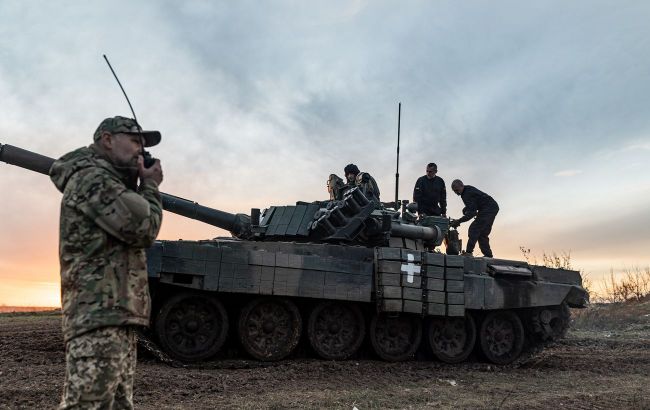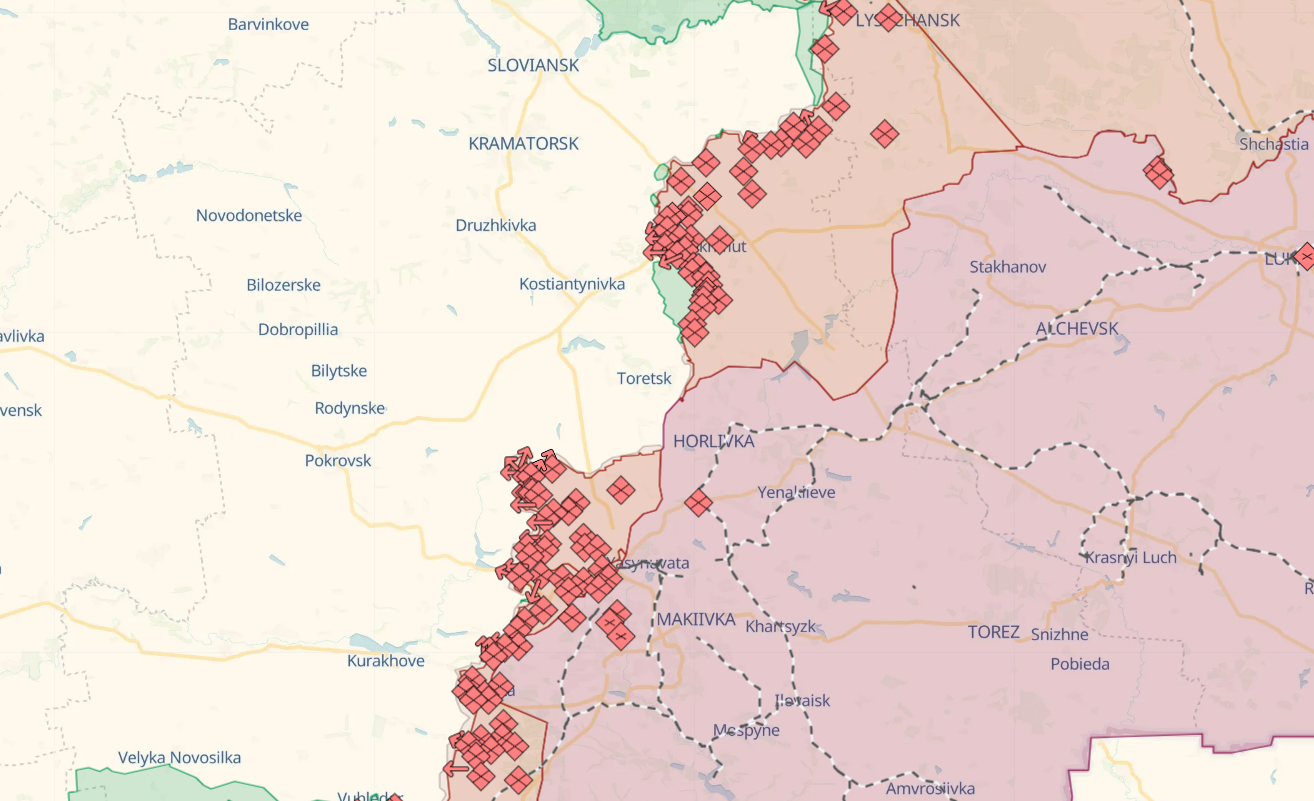Russia's summer offensive: Where and when Moscow might launch new assault
 Ukrainian troops are trying to hold back the Russia's offensive in three areas in the East (photo: GettyImages)
Ukrainian troops are trying to hold back the Russia's offensive in three areas in the East (photo: GettyImages)
Ukrainian officials say that there is a threat of a new wave of Russian offensive since the end of May. Meanwhile, the Russian occupation forces continue to press in the Donetsk region.
RBC-Ukraine's article on what Moscow is preparing for the summer campaign on the frontline.
Ukrainian military and political officials have been warning for months that the Russians are preparing a new offensive in late spring or summer. Given the current logic of Russia's actions at the front, a new attack should probably be expected in Donbas. However, in various publications - both Russian and Western media - one can see predictions that the potential targets of the Russian occupiers may be completely different regions.
When Russia's next offensive will be
Russia is now continuing the offensive that it launched last fall. And despite the exhaustion of its troops, it is still trying to keep up the pace. The Russian invaders want to advance as far as possible before the Ukrainian units receive the additional weapons promised by the United States and have time to fortify themselves on new frontiers.
There are several possible scenarios. The first is that Russia will be stopped and take a break after receiving some of the American aid. When new Russian units and formations come into service, they will begin a new stage of offensive operations. The agency's sources in the Defense Forces believe that the formation of new units of the Russian occupation army will be completed by August. That is why, according to this version, Russia's new offensive may not take place in May or June, but somewhat later - in August or September.
The second scenario is that Russia will not take any pauses and will increase pressure when additional newly formed units arrive at the front line. In this case, the peak of Russia's offensive may also occur in the second half of summer or early fall.
 Russia is currently conducting an offensive in three directions in the Donetsk region (map: DeepState)
Russia is currently conducting an offensive in three directions in the Donetsk region (map: DeepState)
There is a third option - Russia may strike in one of the currently inactive areas starting in late May or during the summer. At the same time, it will continue offensive actions in those areas where it has achieved success so far.
Where Russia can attack
Russia is currently conducting active offensives in three operational areas: Kostiantynivka - in the area of Chasiv Yar, Pokrovsk - on a stretch of a dozen settlements near Avdiivka, and Kurakhove from the side of Maryinka. The situation is most difficult in the latter two. Earlier, RBC-Ukraine explained how they are interconnected and what the Kremlin's more global plan may be.
The agency's interlocutors in the Ukrainian Defense Forces claim that the main Russian goal for the foreseeable future will be the capture of the Donetsk region. However, how the Russians will act to achieve this goal may differ.
According to the first and second scenarios described above, Russia will attack in the same direction as it is doing today. In particular, the most active fighting will be either towards the Kramatorsk agglomeration or in the Kurakhove-Vuhledar direction.
Under the third scenario, Russia may also intensify its activities in Sumy and Kharkiv regions from the territory of the Belgorod region of the Russian Federation. Moscow's goal, on the one hand, is to create a so-called sanitary zone near its border regions. On the other hand, Russia wants to force the Ukrainian command to withdraw some troops from other important areas to defend the Kharkiv and Sumy regions.
 There are three scenarios for possible Russian offensive actions in the summer, one of them is activation in the Kurakhove-Vuhledar direction (map: DeepState)
There are three scenarios for possible Russian offensive actions in the summer, one of them is activation in the Kurakhove-Vuhledar direction (map: DeepState)
Recently, this version has been heavily fueled by the Russian media, both opposition and propaganda. Russian Foreign Minister Lavrov is the first official to openly say that Kharkiv plays an important role in Putin's idea of creating a demilitarized sanitary zone in Ukraine.
The Sever group, which is located in the Briansk, Kursk, and Belgorod regions, according to Information Resistance coordinator Kostiantin Mashovets, has up to 50,000 personnel. There is another group, Zapad, which operates in the Kupiansk direction and, according to various estimates, has 60-80 thousand members. However, since September last year, it has not even managed to capture the small village of Synkivka, a dozen kilometers from Kupiansk.
In any case, in the event of a real threat on the Kharkiv or Sumy directions, Ukrainian officials will warn about it. As of now, the Russians do not have anywhere near enough troops to capture Kharkiv, and they have never launched an offensive against a city of this size during the entire war. Therefore, the likelihood of encircling or capturing Kharkiv now looks very unlikely. The same opinion was recently expressed by analysts at the American Institute for the Study of War (ISW).
Earlier, the ISW suggested that the Ukrainian Armed Forces would be able to prevent a significant operational advance of Russian troops during the aggressor's planned summer offensive. Analysts also doubt that Russia will be able to conduct a larger and more intense operation this summer than all previous ones.

